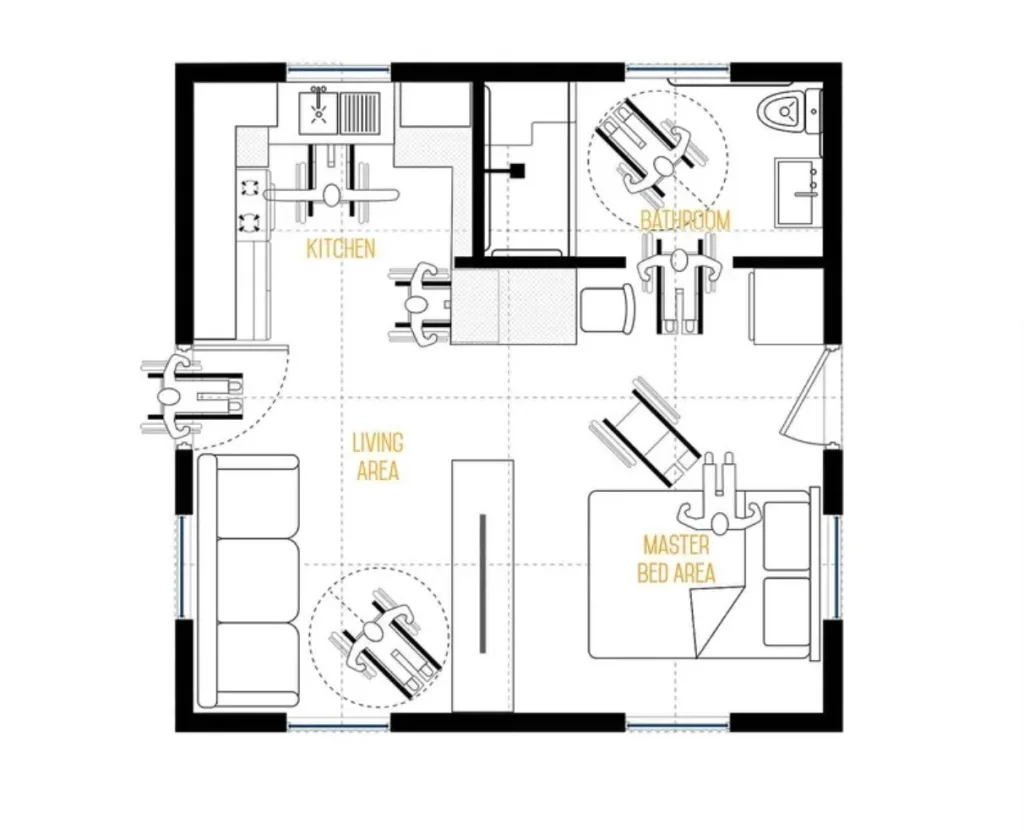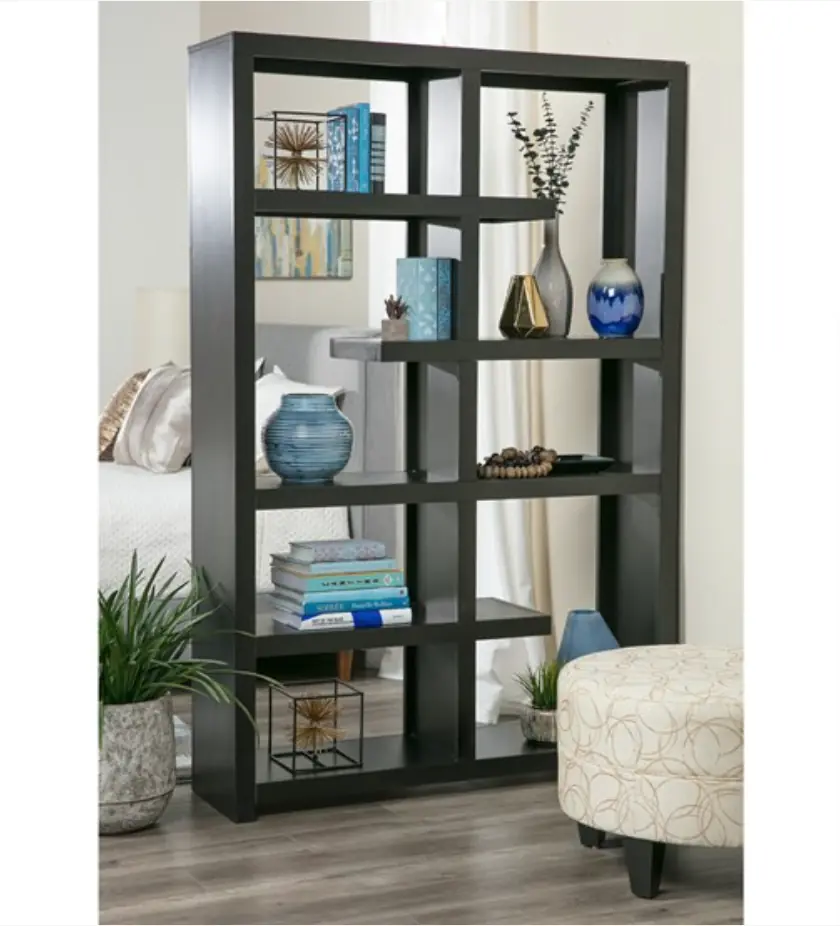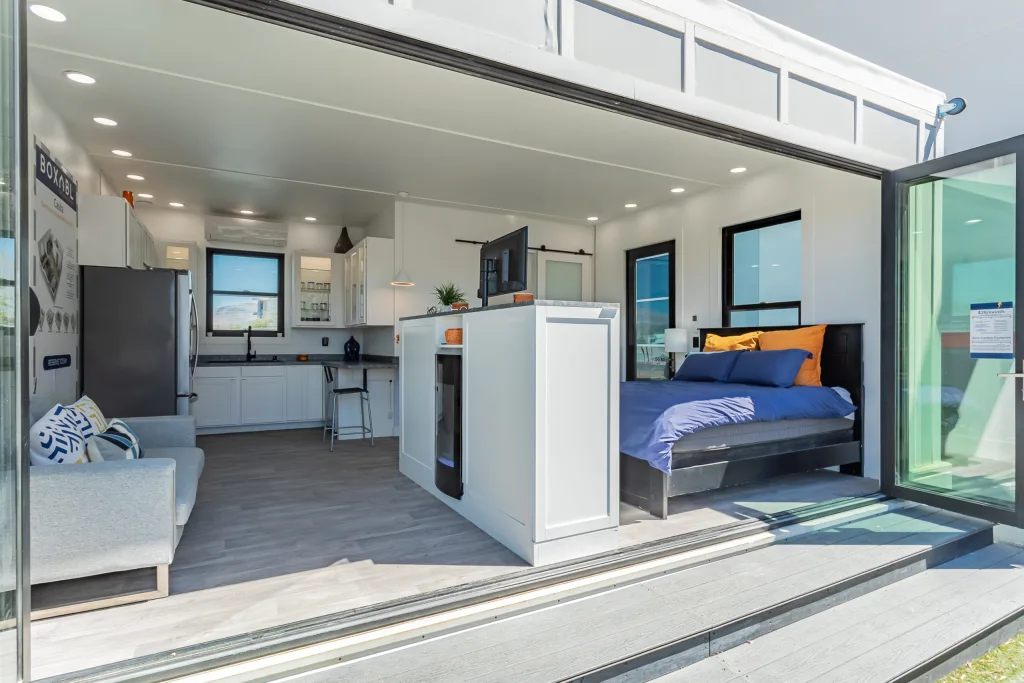Affordable housing is a hot topic, and one term that keeps surfacing in the conversation is “Accessory Dwelling Unit” (ADU).
But are ADUs really the solution we’ve been searching for?
Maybe.
These small, secondary units offer a unique approach to housing, but their true impact varies depending on who you ask.
In this article, we’ll dive into the ADU housing perspectives of tenants, landlords, and real estate agents.
We will uncover if ADUs are changing the way we define affordable housing—or just another buzzword….
- Tenants see ADU as a lifeline in high-cost areas for attainable housing.
- Landlords view ADU as a strategic investment to maximize returns on their real estate investment, depending on the type of ADU they add.
- Real estate agents are recognizing ADU’s potential to reshape the market
- Cities and municipalities see ADUs as a solution to alleviate housing shortages without expanding urban sprawl.
Disclosure: This post may contain affiliate links, meaning I can earn commissions. If you decide to purchase through my links, it is at no cost to you.
The Growing Challenge of Affordable Housing in America
Finding an affordable home in America is becoming increasingly difficult.
The Median home cost is now over $400,000.
For decades, local building restrictions have driven up housing costs and inflation has practically destroyed affordability.
This has left many frustrated and some living in situations or places that are less than ideal.
We now call these folks the Missing Middle.

Now, state policymakers are stepping in to seek broader solutions. One solution leads us to the ADU.
ADUs emerge as a promising solution for navigating the housing crisis. They offer affordable and flexible living options in challenging markets.
What is an ADU?

Some call ADUs a tiny home in the backyard, granny flat, or in-law suite. It is a separate living space from a primary home.
Some ADUs are attached or inside the main property and others are completely detached.
If you have ever seen an apartment in a converted garage or basement, you know what an ADU is, even though you may have called it something else.
These smaller rental units offer a more affordable housing option because they are built on a parcel of land with an existing home or homes.
Related Articles 📚
The Rise of Accessory Dwelling Units
An ADU is considered infill housing as it does not require raw land to be developed or new infrastructure to be added.
Infill can mean … the construction of additional units on existing residential or commercial lots, such as Accessory Dwelling Units (ADUs).
ADUs typically rent for significantly less than nearby apartments. There is less overhead for an ADU versus an apartment complex.
The Impact of ADU Housing
The concept of an ADU will solve many issues for many different populations.
| Population | Impact of ADUs |
|---|---|
| Renters/Tenants | Provides affordable housing options in high-demand areas. |
| Those on limited income | Offers cost-effective living, reducing rent or housing expenses. |
| Homeowners | Adds extra income through rental opportunities, increasing property value. |
| Caring for a family member | Creates a convenient space for elderly or disabled family members. |
| Downsizers or Retirees | Allows for downsizing while staying on the same property. |
| Real Estate Investors/Landlords | Enhances investment potential with multiple rental units on one property. |
| Real Estate Agents | Expands marketability of properties with added value of ADUs. |
| Lenders | Increases loan opportunities and value through additional rental income. |
Integrating ADUs into the housing market comes with challenges, including:
- Regulatory hurdles
- Financial Considerations
- Community acceptance
Related Articles 📚
The Future of ADUs in Addressing Housing Affordability
As we review the role of ADU housing, it becomes clear that these versatile units are more than just a temporary fix.
ADUs are making a significant impact in the fight against the housing affordability crisis, and their influence on the housing market continues to grow.
ADU Housing Perspectives: Tenant, Landlord, Real Estate Agent
The ADU will solve so many issues for so many different people.
Erin Hybart, ReErin.com
I want to explore ADU housing from the perspective of the tenant, landlord, and real estate agent in this article.
Section 1: The Tenant Perspective
ADUs offer Affordable Housing and Increased Housing Options for Tenants
ADUs offer an appealing and affordable housing solution for tenants.
They make it possible for tenants to live in desirable neighborhoods that would typically be out of their financial reach.
This could give them access to better schools, safer environments, and community amenities.
Affordability and Accessibility of ADUS
ADU housing usually come with lower rental prices compared to traditional apartments in the same area. Some tenants don’t want to pay the added cost for amenities they will not use.
This allows tenants to save on housing costs without sacrificing location.

ADUs offer Diverse Housing solutions
ADUs accommodate a variety of tenants, including singles, small families, and those seeking a more downsized, manageable living space.
Community Living and Privacy in ADUs
ADUs strike a perfect balance between community living and personal privacy.
Unlike apartments, ADUs often feature a separate entrance, outdoor space, and a quieter living environment. Many tenants live the independence that ADU offers.
Sense of Community
Tenants often benefit from a closer relationship with their landlords, who typically live in the primary residence. This leads to a more personalized rental experience.
It also gives the landlord more visual access to their rental space.
Privacy and Independence
ADUs are designed with privacy in mind. Features like separate entrances, private backyards, and soundproofing ensure that tenants can enjoy their independence.
ADU Rental Challenges and Important Considerations
Despite their advantages, ADUs come with some challenges that tenants should consider.

Size and Space Limitations
The compact nature of ADUs can be challenging for tenants with larger families or those needing ample storage.
Typically ADUs do not have more than 1-2 bedrooms and are less than 1,200 square feet in size (or less).

Creative space utilization is a must in these spaces. Many spaces are often used for multi-purpose.
Creativity is key!
Related Articles 📚
Variable Regulations and Legalities of ADU housing
ADU regulations and availability can vary widely depending on local zoning laws.
Some areas are not ADU-friendly just yet. This only drives my passion.

Utility and Maintenance Arrangements in ADU Rentals
ADU rentals often involve shared utilities with the main house and might include responsibilities like yard maintenance.
This could be a cost savings for the tenant.
Section 2: The Landlord Perspective
Financial Incentives and Benefits of ADUs
For many landlords, the financial rewards are the main attraction when it comes to building ADUs.
These benefits can range from generating additional rental income to receiving tax incentives.

ADUs offer an Additional Income Stream
ADUs provide landlords with a low-risk investment opportunity to boost their rental income.
These units can significantly increase monthly revenue without the need for a large upfront investment.
Tax Benefits and Incentives
Landlords can also take advantage of various tax benefits when building ADUs.
Who doesn’t want to save on taxes???
These might include deductions that promote affordable housing development for:
- Construction costs
- Property tax incentives
- Credits offered by local or federal programs
Property Value Enhancement and Space Optimization
ADUs don’t just offer financial benefits; they also enhance the overall value and utility of a property.
This makes them a compelling option for landlords who want to maximize their real estate investments.
Enhancing Property Value
Building an ADU can significantly increase the market value of a property.

These units appeal to a broad segment of buyers, including those looking for multi-generational living options or additional rental income.
Properties with ADUs often sell at a premium because they offer extra flexibility and income potential, making them highly attractive in competitive real estate markets.
Optimizing Property Space
ADUs allow landlords to make the most of underutilized space on their property.
For example, a large backyard or an unused garage can be converted into a profitable living unit.
Is it better to store a bunch of stuff in your garage or convert it to a space generating income?
Legal and Regulatory Considerations for Landlords
Navigating the legal landscape is essential for landlords who are considering building ADUs.
Understanding ADU zoning laws, building codes, and the permitting process is key to a successful ADU project.
Navigating Zoning Laws and Building Codes
Landlords must be aware of the zoning restrictions and building codes that apply to ADUs in their area.
Some zoning rules allow for the prefab ADU and others only allow site-built ones. Determining if you can use a Tiny House as your ADU is another zoning consideration.
These regulations can vary widely by location and may include limits on the size, height, and design of the units.
Understanding these rules upfront can help landlords avoid costly mistakes and ensure that their ADU project complies with local laws.

Permit Process and Compliance
The process of obtaining permits for an ADU can be complex and time-consuming.
It typically involves multiple steps, including:
- Submitting detailed plans
- Undergoing inspections
- Meeting local building code requirements
Landlords should be prepared for potential delays and additional costs associated with obtaining the necessary permits.

Challenges and Solutions
Legal and regulatory challenges are common when building ADUs, but they can be managed with the right approach.
Landlords may benefit from hiring professionals, such as architects or contractors, who are familiar with local ADU regulations.
Engaging with local housing authorities or planning departments early in the process can provide valuable guidance and help ensure compliance.
Section 3: The Real Estate Agent Perspective
Market Demand for ADUs and Emerging Trends
ADUs are becoming increasingly popular in the real estate market, driven by changing homeowner needs and evolving housing trends.
Growing Demand for Flexible Housing Options
There is a rising interest in properties with ADUs due to their versatility. Homebuyers are attracted to these units because they can serve as:
- Guest houses
- Rental Properties
- Living spaces for aging relatives
This trend is reshaping buyer preferences in some real estate markets, with more clients specifically seeking homes that include or have the potential for ADUs.
Impact on Real Estate Market Trends
The popularity of ADUs is significantly influencing real estate market dynamics. As more buyers look for properties with ADUs, the demand has led to changes in:
- Pricing
- Inventory
- Buyer demographics
Properties with ADUs are often priced higher due to their additional income potential and multi-use appeal.
Selling Points and Challenges for ADU Properties
Properties with ADUs offer distinct selling points but also pose specific challenges for real estate agents. The sooner you understand these, the better.
For example, emphasizing the income-generating potential or the convenience of having a space for extended family can be powerful selling points.
Marketing and Selling Challenges of Properties with ADUs
While ADUs offer unique benefits, they also come with challenges for agents.
Financing can be a significant hurdle, as some buyers may face difficulties securing loans that account for the ADU’s added value.
Appraisal issues may arise if the ADU’s contribution to the property value is not fully recognized. If you are in an area where ADUs are not common, there could be a lack of comparables for the appraiser to use.
To overcome these obstacles:
- Agents can work closely with lenders familiar with ADU properties
- Ensure accurate appraisals by providing detailed information on the ADU
- Stay informed about local zoning laws to guide buyers effectively
Future Outlook for ADUs in Real Estate
The role of ADUs in the real estate market is evolving, influenced by changing housing needs, new regulations, and technological advancements.
Impact of Legislative Changes on ADUs
Legislative shifts are likely to play a significant role in the future of ADUs. It has already started in many states.
Potential changes, such as relaxed zoning laws or new building standards, could make it easier to develop and sell properties with ADUs.
These changes could open up new opportunities for real estate agents, as more properties become eligible for ADU development and more buyers seek these flexible living arrangements.

Advancements in ADU Construction Technology
Technological innovations, such as modular and prefab ADUs, are making it more accessible and cost-effective to add ADUs to properties.
These advancements could expand the market by reducing construction costs and timelines, making ADUs an even more attractive option for homeowners and buyers alike.
Agents should stay updated on these technologies to better inform and assist clients interested in ADU properties.
Long-Term Market Implications of ADUs
The growing trend of ADUs could have significant long-term implications for the real estate market.
As ADUs become more common, they could influence future housing development, with more emphasis on flexible, multi-use properties.
Real estate agents who understand and adapt to these trends will be better positioned to succeed in an evolving market.
ADUs could play a crucial role in addressing housing affordability by providing more rental options in desirable neighborhoods.
Final Thoughts on ADU Housing Perspectives
Embracing ADUs is more than just a response to the current housing shortage; it’s a step toward creating a more flexible, inclusive, and sustainable future.
As this trend gains momentum, it’s crucial for all stakeholders—tenants, landlords, real estate professionals, and policymakers—to work together.
By navigating the challenges and seizing the opportunities that ADUs present, we can ensure they remain a positive force in the quest for affordable and accessible housing.
ADUs are a vital piece of the puzzle in solving the affordable housing crisis, helping to build more vibrant, inclusive communities for everyone.
Frequently Asked Questions
What is an Accessory Dwelling Unit (ADU)?
An ADU is a secondary housing unit on a single residential lot, typically smaller than the main house. It can be attached to the main house, like a basement or garage conversion, or a detached structure like a backyard cottage.
Can I build an ADU on my property?
This depends on your local zoning laws and regulations, which vary widely. Most areas require property owners to obtain permits before constructing an ADU.
How much does it cost to build an ADU?
Costs vary significantly based on location, size, design, and materials. Generally, constructing an ADU can range from $35,000 for a modest conversion to over $200,000 for a new, standalone structure.
Do ADUs increase property taxes?
Typically, adding an ADU will increase your property value and, consequently, your property taxes. However, the increase may be offset by the potential rental income from the ADU.
Can ADUs be used as rental properties?
Yes, many property owners build ADUs to rent them out as a source of income. Local regulations may dictate rental terms, such as minimum rental periods and the need for separate utilities.
Are there financing options available for building an ADU?
Yes, there are several ADU financing options available, including home equity loans, personal loans, and ADU-specific financing programs. Some regions also offer grants or incentives to encourage ADU construction.
Image Source: Canva, Pexels, Pixabay, Open Verse, Unsplash





